
Royalton is a town in Windsor County, Vermont, United States. The population was 2,750 at the 2020 census. It includes the villages of Royalton, South Royalton, and North Royalton. Vermont Law School, the state's only accredited law school, is located in South Royalton.

Oliver H. P. Cowdery was an American religious leader who, with Joseph Smith, was an important participant in the formative period of the Latter Day Saint movement between 1829 and 1836. He was the first baptized Latter Day Saint, one of the Three Witnesses of the Book of Mormon's golden plates, one of the first Latter Day Saint apostles and the Assistant President of the Church.
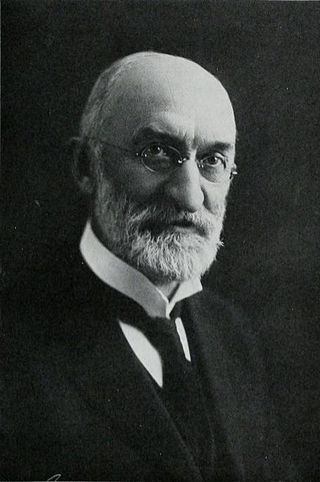
Heber Jeddy Grant was an American religious leader who served as the seventh president of the Church of Jesus Christ of Latter-day Saints. Grant worked as a bookkeeper and a cashier, then was called to be an LDS apostle on October 16, 1882, at age 25. After the death of Joseph F. Smith in late 1918, Grant served as LDS Church president until his death.
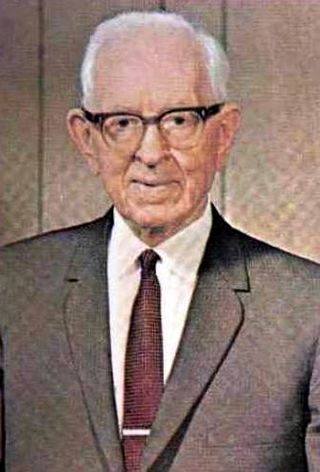
Joseph Fielding Smith Jr. was an American religious leader and writer who served as the tenth president of the Church of Jesus Christ of Latter-day Saints from 1970 until his death in 1972. He was the son of former church president Joseph F. Smith and the great-nephew of Church founder Joseph Smith.

Joseph Fielding Smith Sr. was an American religious leader who served as the sixth president of the Church of Jesus Christ of Latter-day Saints. He was a nephew to, and the last president of the LDS Church to have known personally, Joseph Smith, the founder of the Latter Day Saint movement.
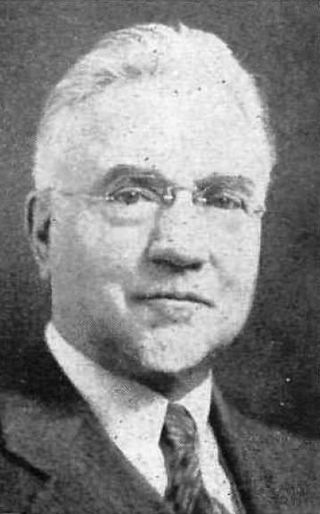
John Andreas Widtsoe was a Norwegian-American scientist, author, and religious leader who was a member of the Quorum of the Twelve Apostles of the Church of Jesus Christ of Latter-day Saints from 1921 until his death in 1952.

The Kirtland Temple is the first temple built by adherents of the Latter Day Saint movement. It is located in Kirtland, Ohio, United States, and was completed and dedicated in March 1836. Designed by Joseph Smith, the founder and original leader of the movement, the architecture mixes the Federal, Greek Revival, and Gothic Revival styles. The temple was added to the National Register of Historic Places in 1969 and named a National Historic Landmark in 1977. Prior to March 5, 2024, it was owned and operated by Community of Christ for more than a century. Since that date, it has been owned and operated by the Church of Jesus Christ of Latter-day Saints as a historic site open year-round for guided tours, meetings, and other programming.

The Kinderhook plates are a set of six small, bell-shaped pieces of brass with unusual engravings, created as a hoax in 1843, surreptitiously buried and then dug up at a Native American mound near Kinderhook, Illinois, United States.
This is a timeline of major events in Mormonism in the 20th century.
Joseph Smith: The Prophet of the Restoration is a 2005 film that focuses on some of the events during the life of Joseph Smith, founder of the Latter Day Saint movement, which was both filmed and distributed by the Church of Jesus Christ of Latter-day Saints. The film was shown in the Legacy Theater of the Joseph Smith Memorial Building from its opening on December 17, 2005 until early 2015, and opened in several LDS Church visitors' centers on December 24, 2005.
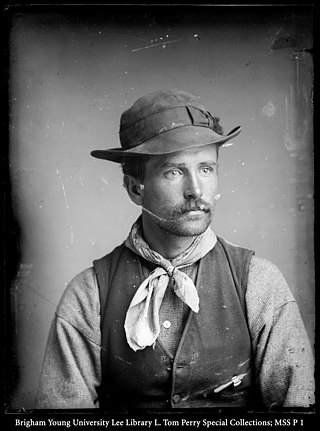
George Edward Anderson was an early American photographer known for his portraiture and documentary photographs of early historical sites of the Church of Jesus Christ of Latter-day Saints and Utah settlements.

The Sacred Grove is a forested area of western New York near the home of Joseph Smith where the foundational event of the Latter Day Saint movement took place. It is the location where Smith said he had his First Vision, a theophany, occurring in the spring of 1820.
Junius Free Wells was the first head of the Young Men's Mutual Improvement Association, an organization which is today the Young Men organization of the Church of Jesus Christ of Latter-day Saints. He also was a magazine founder, an author, and the chief organizer of the LDS Church's efforts to build a number of historical monuments in the early 1900s.

Florence Smith Jacobsen was an American religious leader associated with the Church of Jesus Christ of Latter-day Saints who served as the sixth General President of the Young Women's Mutual Improvement Association (YWMIA) from 1961 to 1972.

South Royalton is an unincorporated village and census-designated place (CDP) in the town of Royalton, Windsor County, Vermont, United States. With a population at the 2010 census of 694, South Royalton is the largest community in the town. It is home to the Vermont Law School. The central portion of the village is a historic district, listed on the National Register of Historic Places as the South Royalton Historic District. The Joseph Smith Birthplace Memorial is located approximately two miles to the east. South Royalton is the town pictured in the opening credits of the WB television show Gilmore Girls.
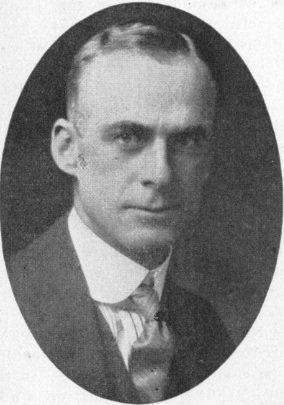
Preston Nibley was an American religious leader in the Church of Jesus Christ of Latter-day Saints, and wrote several books on the church, including several pieces of devotional literature.
Mormon studies is the interdisciplinary academic study of the beliefs, practices, history and culture of individuals and denominations belonging to the Latter Day Saint movement, a religious movement associated with the Book of Mormon, though not all churches and members of the Latter Day Saint movement identify with the terms Mormon or Mormonism. Denominations of the Latter Day Saint movement include the Church of Jesus Christ of Latter-day Saints, by far the largest, as well as the Community of Christ (CoC) and other smaller groups, include some categorized under the umbrella term Mormon fundamentalism.

The following outline is provided as an overview of and topical guide to the life and influence of Joseph Smith:

Monument to Women Memorial Garden is a statuary monument in Nauvoo, Illinois, owned by the Church of Jesus Christ of Latter-day Saints. The monument is a two-acre garden with twelve statues depicting traditional women's roles. It was constructed in the 1970s to serve as a replacement for the Relief Society monument and designed to promote the woman's values which the LDS Church believed were threatened by the Equal Rights Amendment (ERA). Dennis Smith and Florence Hansen sculpted the bronze statues and church president Spencer W. Kimball dedicated the monument on June 30, 1978.

The Church of Jesus Christ of Latter-day Saints in Vermont refers to the Church of Jesus Christ of Latter-day Saints and its members in Vermont.


















